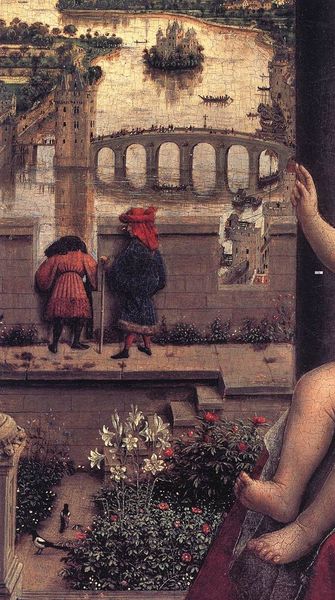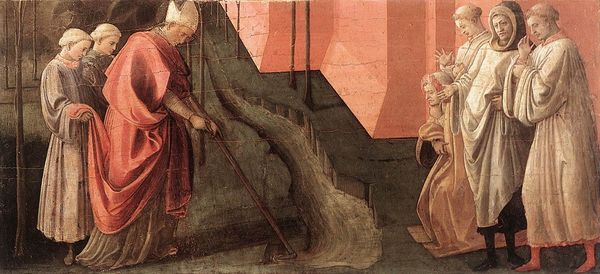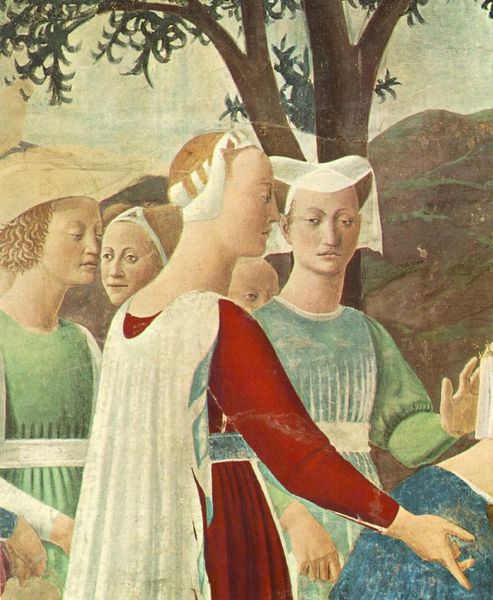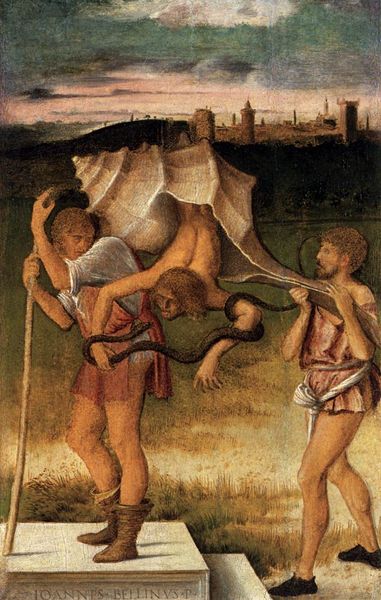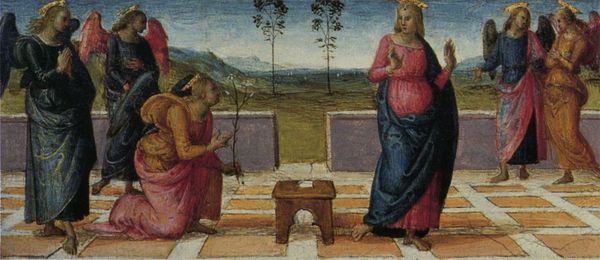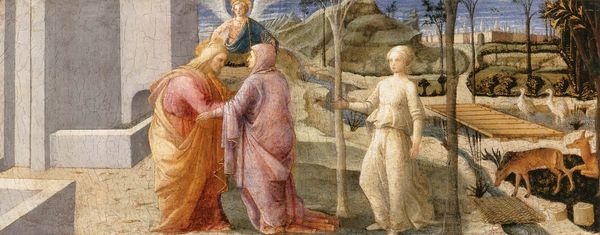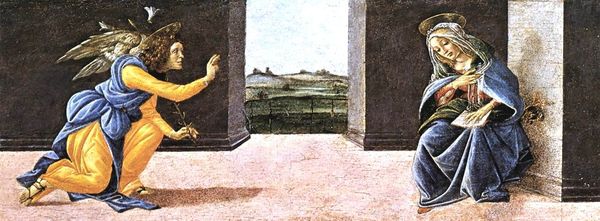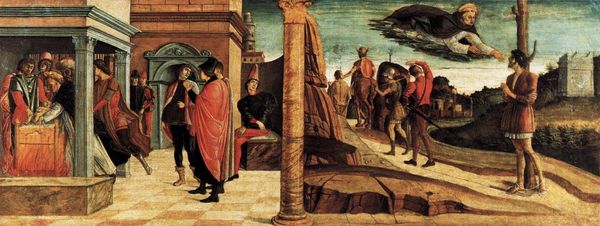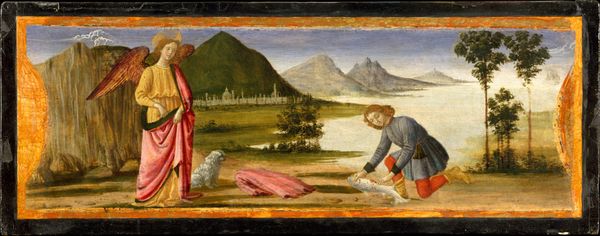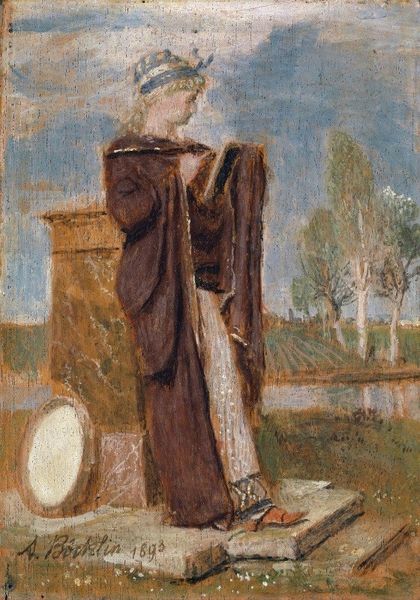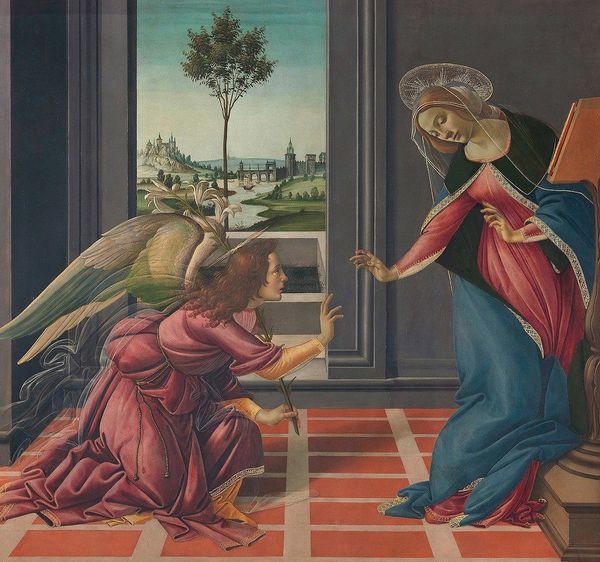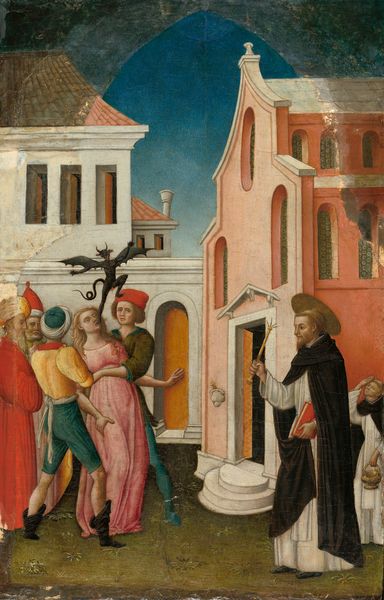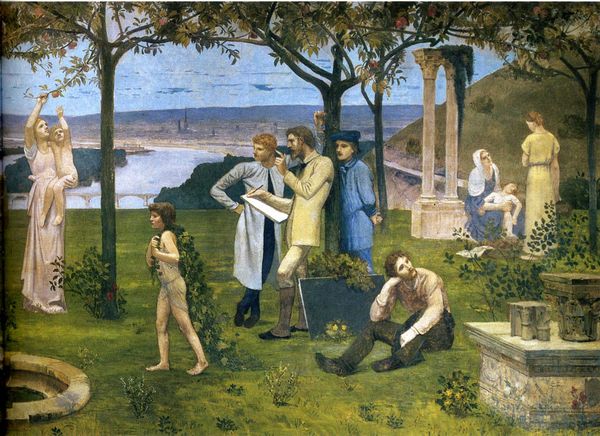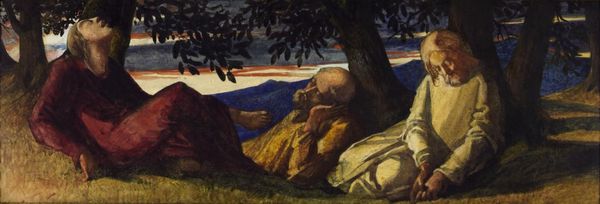
panel, oil-paint
panel
oil-paint
landscape
figuration
oil painting
arch
christianity
italian-renaissance
early-renaissance
virgin-mary
angel
Dimensions: 16 x 60 cm
Copyright: Public domain
Curator: Standing before us is Leonardo da Vinci’s "Annunciation," completed around 1480. Executed in oil paint on a panel, it depicts the archangel Gabriel informing Mary that she will conceive and bear the son of God. Editor: It feels so serene, almost unsettlingly so. The details are meticulously rendered, especially the wings of the angel and the folds in Mary’s gown. There's an odd disjunction between the crisp foreground and hazy background. Curator: Indeed. Leonardo's process here is remarkable. Notice the use of sfumato in the distant landscape, which adds depth and contributes to the ethereal quality. Consider also the craftsmanship involved; preparing the panel, grinding pigments, mixing the oil. The materiality speaks volumes about Renaissance workshop practices. Editor: And those lilies the angel holds—symbols of Mary's virginity. The garden setting becomes this space for divine intervention but also subtly underscores gendered notions of purity and piety imposed on women. Also consider the fact this encounter arguably defined not only Christian theology, but western art for centuries. The politics behind something seemingly so gentle. Curator: The underdrawing and the layering of paint is also fascinating. Close examination reveals pentimenti—evidence of Leonardo altering the composition as he worked, reflecting a constantly evolving creative process in a very tactile sense. Editor: Seeing Gabriel kneeling, handing her what seems like a prophecy; he embodies not just religious might, but also worldly power in dictating a women’s purpose and agency. It's visually harmonious but carries a charged social narrative about obedience. Curator: A compelling point, reflecting how artworks carry cultural and social weight that's intrinsically linked to the methods of production and what was available. The panel itself had a very specific cultural capital during this era as well. Editor: Exactly, that’s where history and material converge and challenge the work's aesthetic value, sparking essential discourse about both artistic ingenuity and broader implications. Curator: Well, what I've seen examining the physical process certainly grants further richness in terms of historical craftsmanship and how art objects of that era become valuable. Editor: Absolutely, it’s crucial to contextualize the artistic techniques as inseparable from their wider social repercussions for genuine perspective on its lasting impact.
Comments
No comments
Be the first to comment and join the conversation on the ultimate creative platform.
